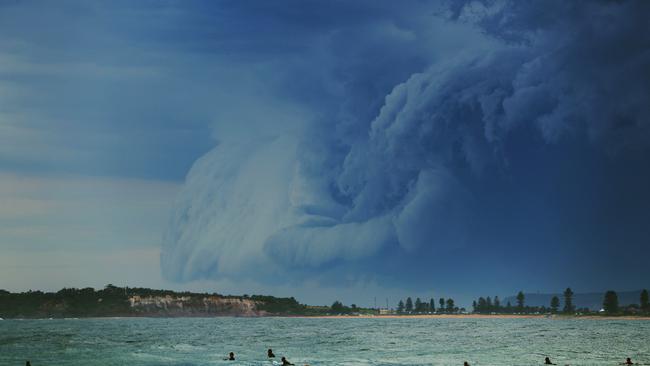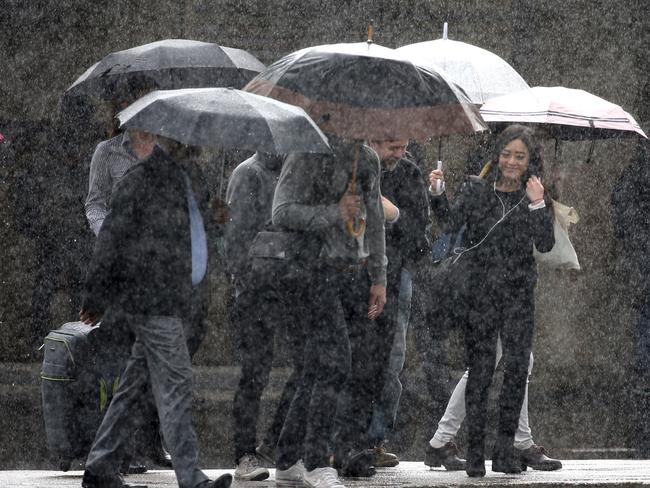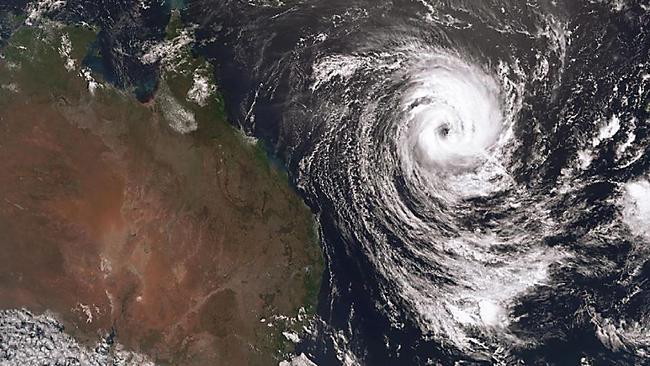NSW weather from October to April predicted to be wet and wild
According to the annual severe weather season forecast, warm and rainy weather is predicted from October to April — but there’s also an increased chance of floods, extreme thunderstorms and even tropical cyclones.
NSW
Don't miss out on the headlines from NSW. Followed categories will be added to My News.
After a cold, locked down winter NSW is in for a warm, wet and rainy severe weather season of October through to April, with more than the usual number of severe thunderstorms and flooding likely on the way.
We can also expect a summer of average temperatures but also wetter than most, according to Sky News chief meteorologist Tom Saunders’ annual severe weather season forecast.
Mr Saunders predicts a potential La Nina phase in the Indian Ocean – ocean temperatures that shift wet weather to eastern Australia — will drive the increased chance of floods, extreme thunderstorms and also tropical cyclones.
“2021 has continued the recovery from the severe nationwide drought of 2017-2019, with many key agricultural regions having benefited from prosperous growing seasons for the last 18 months,” Mr Saunders said.
“Water catchments have also seen a significant boost to storage levels.”


Meteorologists refer to the seven months from October to April as the severe weather season, as this is when most extreme weather events happen in Australia.
“As we transition into the warmer months, global climate indicators signal a continuation of the current wet period due to moisture flowing south from tropical waters surrounding Australia, bringing frequent rain and thunderstorm events to the country.”
The southeastern states including NSW will have an increased risk of serious flooding, including in the Sydney basin where high dam levels could see another flooding event in western Sydney.
The wet weather continues the trend from the previous season, with inland parts of NSW in particular reaping the benefits of the drought recovery.
In NSW, the percentage of the state in drought has dropped from 100 per cent to 5 per cent between January 2020 and September 2021.


The rain has also boosted water storage levels, including an 18-month total capacity rise through the Murray Darling Basin from 32 per cent to 83 per cent.
NSW is predicted to have a 70-80 per cent chance of above average rainfall and the thunderstorm season is expected to be especially active this year.
Higher than average sea surface temperatures on the east and north coastline make the perfect conditions for thunderstorms.
South east QLD and north east NSW are of the most concern and are expected to see frequent stormy days.
It is predicted Sydney will have 17-21 days of extreme thunderstorms which can include hail larger than a $2 coin, wind gusts of 90km/h and even tornadoes and flash flooding.



Thanks to the cloud cover and reduced solar radiation from the predicted rainfall, Australia is expected to have a warmer than average SWS but not see the extreme conditions of the 2019/2020 Black Summer bushfires.
The continued impact of climate change is seeing temperatures rise year on year, with Sydney now recording 21 consecutive years of above average temperatures in the SWS.
There is a 60-70 per cent chance Sydney will see hotter than average maximum temperatures.
Mr Saunders said climate change is the biggest driver of the warmer temperatures expected this year.
“Typically with LA Nina you have increased cloud cover because of the rain and that drops max temperatures, however that’s now balanced with global warming where even during La Nina years we can see above average temperatures,” he said.
It is unlikely that NSW will see a heatwave this SWS but it will still be hot and humid.
REGIONAL NSW HARDEST HIT
Regional NSW has been the hardest hit from storms and hail in the past 12 months as the state braces for another stormy severe weather season.
New storm tracker data from the NRMA found 60 per cent of all home claims in the past year were for storm and hail damage - more than 28,000 claims.
Newcastle and the Mid North Coast account for a quarter of all storm claims in the past year, with Port Macquarie recording the highest number of storm claims in the state.
Wild weather in late August saw a third of all storm claims during the winter.
“The storms that hit NSW in late August resulted in over 1,000 home claims being lodged over a 10-day period. No two seasons are the same and as our claims data shows, even low scale weather events can have a big impact,” said NRMA Executive General Manager, Direct Claims Luke Gallagher.
“With many Australians spending more time at home due to the pandemic, we are encouraging people to get their home disaster ready before the next storm hits. This gives you the best opportunity to protect your loved ones and property from a severe weather event”
Research into preparedness found the North Coast was the most prepared part of the state for severe weather, while Sydney’s eastern suburbs was the least prepared.
“By taking simple steps today to prepare ahead of potential storms, you can make a world of difference should a storm strike tomorrow,” said NSW SES Commissioner Carlene York.
AREAS MOST IMPACTED BY STORMS
Port Macquarie
Wauchope
Castle Hill
Dubbo
Albion Park
Parkes
Glenmore Park
Tamworth
Maryland
Nambucca Heads
Tom Saunders is chief meteorologist at Sky News Weather. Watch Sky News Weather, Foxtel Channel 601, for all your latest weather updates.
Got a news tip? Email weekendtele@news.com.au




